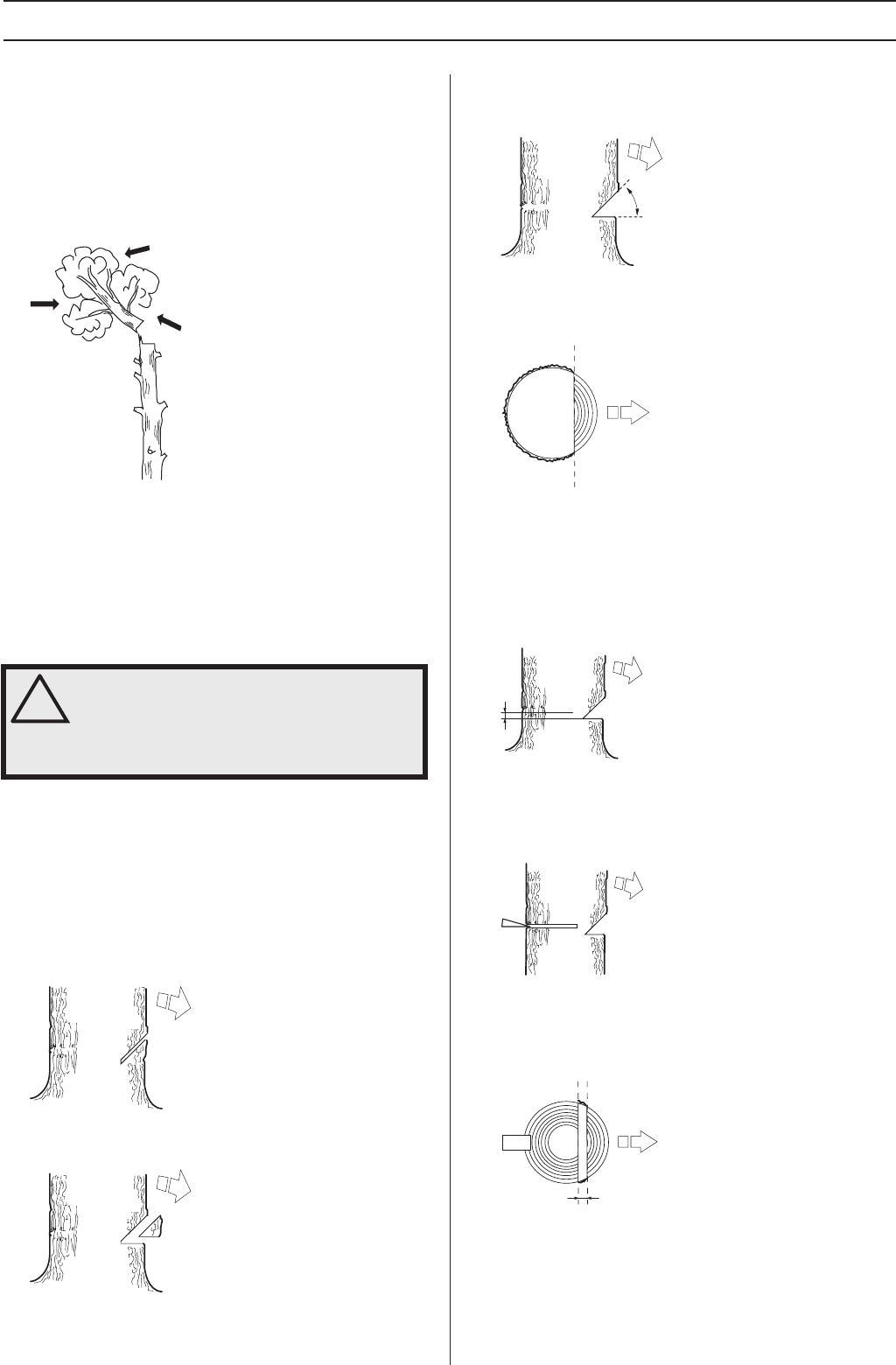
24 – English
WORKING TECHNIQUES
Several factors affect this:
• Lean of the tree
• Bend
• Wind direction
• Arrangement of branches
• Weight of snow
You may find you are forced to let the tree fall in its natural
direction because it is impossible or dangerous to try to make
it fall in the direction you first intended.
Another very important factor, which does not affect the felling
direction but does affect your safety, is to make sure the tree
has no damaged or dead branches that might break off and
hit you during felling.
Felling
Felling is done using three cuts. First you make the directional
cuts, which consist of the top cut and the bottom cut, then you
finish with the felling cut. By placing these cuts correctly you
can control the felling direction very accurately.
Directional cuts
To make the directional cuts you begin with the top cut. Stand
to the right of the tree and cut on the pull stroke.
Next make the bottom cut so that it finishes exactly at the end
of the top cut.
The directional cuts should run 1/4 of the diameter through
the trunk and the angle between the top cut and bottom cut
should be 45°.
The line where the two cuts meet is called the directional cut
line. This line should be perfectly horizontal and at right
angles (90°) to the chosen felling direction.
Felling cut
The felling cut is made from the opposite side of the tree and
it must be perfectly horizontal. Stand on the left side of the
tree and cut on the pull stroke.
Make the felling cut about 3-5 cm (1.5-2 inches) above the
bottom directional cut.
Use full throttle and bring the bar and chain slowly into the
tree. Make sure the tree does not start to move in the opposite
direction to your intended felling direction. Drive a wedge or
breaking bar into the cut as soon as it is deep enough.
Finish the felling cut parallel with the directional cut line so
that the distance between them is at least 1/10 of the trunk
diameter. The uncut section of the trunk is called the felling
hinge.
!
WARNING! During critical felling operations,
hearing protectors should be lifted
immediately when sawing is completed so
that sounds and warning signals can be
heard.


















